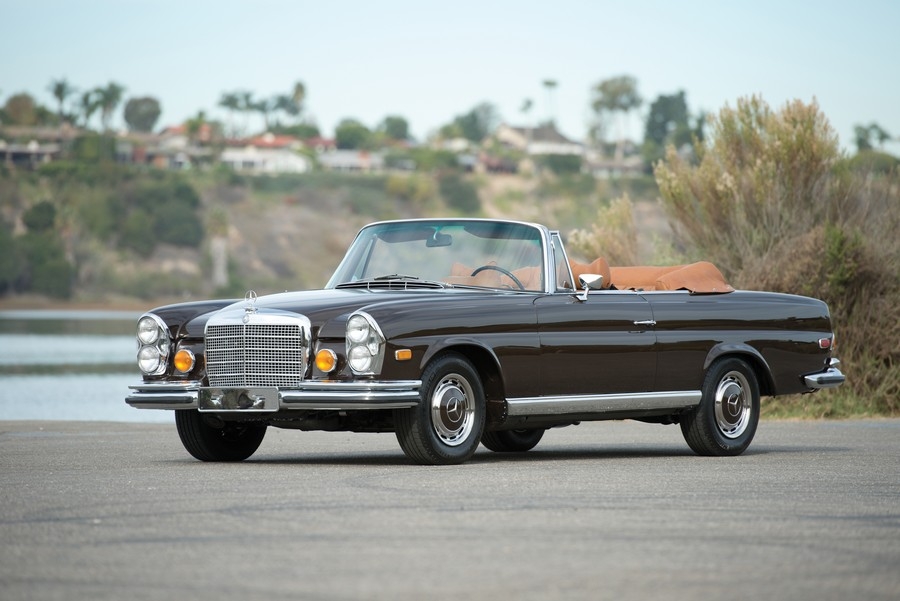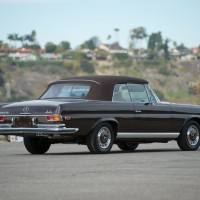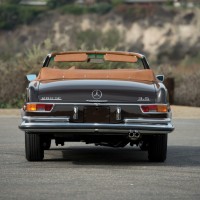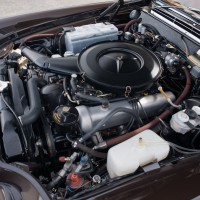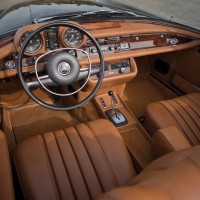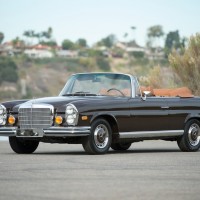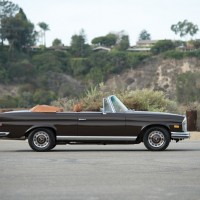SCM Analysis
Detailing
| Vehicle: | 1971 Mercedes-Benz 280SE 3.5 Cabriolet |
| Number Produced: | 1,232 |
| Original List Price: | $14,155 |
| Tune Up Cost: | $800 |
| Chassis Number Location: | Windshield pillar |
| Club Info: | Mercedes-Benz Club of America |
| Website: | http://www.mbca.org |
| Alternatives: | 1971 Rolls-Royce Corniche, 1971 Cadillac Eldorado, 1962 Mercedes-Benz 220SEb |
| Investment Grade: | B |
This car, Lot 95, sold for $297,000, including buyer’s premium, at RM’s sale in Phoenix, AZ, on January 17, 2014.
When admiring any classic car, the avid enthusiast can easily paint a picture of where and how that car should be used. For some cars, owners might see themselves on a racetrack during a private track day or debarking under the porte-cochère of a luxurious European villa.
But when it comes to an example like this of the Mercedes-Benz 280SE 3.5, the picture is of departing from the Hotel Bel-Air (no one who is anyone would stay at the Beverly Hills Hotel, don’t you know?) for a spring drive up the Pacific Coast Highway to Carmel — complete with top down, wind in the hair and sunglasses to break the glare off the ocean. So very Cary Grant.
That’s why this beautifully restored example of the elegant V8 cabriolet (never call it a convertible) sold for $297,000. That’s all that needs to be said.
The car of its time
However, for the person who lives at least some of the time in the world of appraisals and provenance — rather than just in the fantasy world of automotive enjoyment — of course there are the nitty-gritty details. While being the world’s reliable producer of sturdy taxi cabs and reliable family sedans, Mercedes-Benz has always had a 2-door model to put in the front of the showroom to demonstrate its lock on the carriage-trade market.
During the 1960s, all the Hollywood stars drove these luxurious and distinctive 2-door models, built on the W-111 chassis that they shared with the staid 4-door finback, but with the smooth lines and rounded fenders that emulated the smaller two-seat sports roadsters.
Over the course of that decade, the company would produce just fewer than 36,000 units of the coupe and cabriolet, testifying to their prestige. But the rarest of the rare for collectors were the V8 versions. These were produced for only two years as a last desperate attempt to keep the model alive against competition from cars such as the Cadillac DeVille V8 that were selling for one-third the price of the Mercedes.
Even at that retail price, Mercedes was probably losing money on each unit, since each 280SE coupe and cabrio was assembled by hand off the assembly line, and the V8 versions required additional chassis modifications.
So, alas, as the world spiraled down into recession caused by the 1967 oil embargo, there were fewer affluent buyers. The combination of expensive supply and waning demand caused an end to production in July 1971.
Rarity, presence and performance
What all this means today is that the best examples of the 280SE 3.5 cabriolet are rapidly increasing in price. The V8 versions are perfectly suited to provide an appropriate driving experience for the person who is willing to pay whatever it takes to get a no-excuses example.
In September 2011, The Star, magazine of the Mercedes-Benz Club of America, valued an excellent example at $185,000. In January of 2014, $300,000 was required to purchase this comparable example, and who knows what the price might be in August in Monterey — or in Phoenix next January. ♦
(Introductory description courtesy of RM Auctions.)
